What is a GIA Graded Diamond?
GIA Graded Diamonds: What are They?
A GIA diamond report is a wonderful thing. GIA's reports not only tell you all you would ever want to know about a diamond but also make sure that what it tells you is as accurate as it can be. If my time at GIA has taught me anything at all, it would be that GIA really really cares about its standards.
However, the only drawback is that GIA throws everything at you all at once. With five types of reports for colorless diamonds alone, and each report containing as many as seven parts, it can be overwhelming.
If they make perfect sense to you, then congrats, you are either a gemologist or a natural at this. If it is too much, fear not! This guide is here to help you break it down piece by piece and be an expert in no time!
What is a Diamond Origin Report from GIA
The best way to start is to break down the report with the most parts: The Diamond Origin Report.
You can break down all GIA Graded reports into three large sections. Panel 1 is the basic stats of a diamond. Panel 2 is the details about proportions and clarity characteristics. Panel 3 is a summary of GIA's standards (*they love their standards).
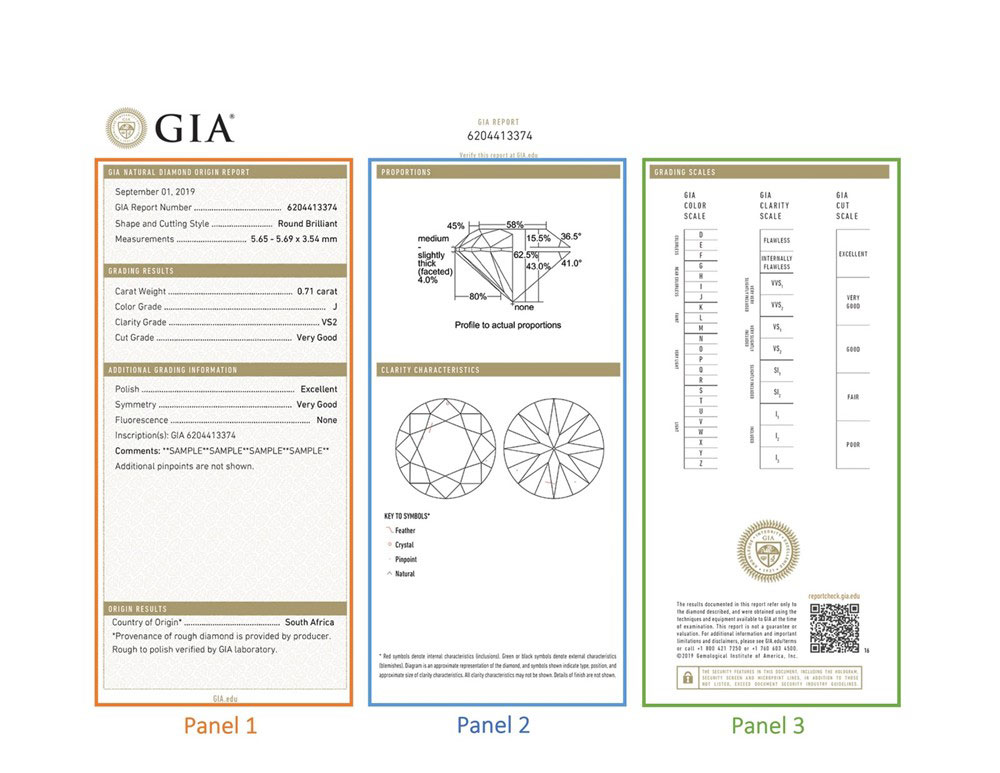
GIA Report Sections Explained in Detail
Basic Section
This panel contains crucial information about a diamond, and GIA breaks the information down into four sections.
Section 1 contains the report date, report number, the cut of the diamond, and the measurements of the diamond.
Section 2 is named the Grading Results and details the 4Cs.
Section 3 is the additional grading information with the Polish grade, symmetry grade, fluorescence, inscription (if applicable), and a comment section that usually contains details on the clarity grade.
Section 4 is the Origin Results which records where the rough diamond was mined. This is exclusive to natural diamonds and this type of report only.

Proportions and Clarity Characteristics
This panel is split into two sections accompanied by a representation of that specific diamond.
Proportions measure all the angles that make the diamond sparkle and shine. For those with specific cut standards in mind, here is where you are going to find your dream table percentage or perfect crown angle.
Clarity characteristic or clarity plot is a map of the what, where, and where of inclusions in a diamond. The plot is here to help you make sure that the diamond matches the report and you know what inclusions to expect in your diamond. If the plot shows a large chunky crystal in the middle of the table, it might not be the eye-clean you are looking for.
(*Fun side note: GIA is so good at plotting their diamonds that FBI agents were able to recover stolen diamonds by matching previous grading reports of the stolen diamonds with the recut stolen diamonds as they surfaced.)
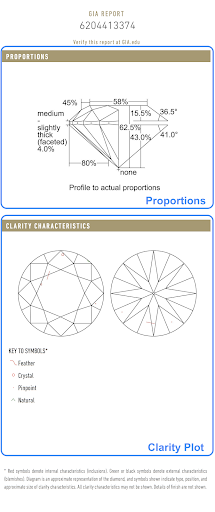
Grading Scales and Other Tidbits
Like I said GIA loves its standards. Making sure that we all get that memo and consumers always have a reference, all the possible grading standards are listed here again.
You can also find a QR code on the bottom right-hand corner. If you have a camera and a smartphone, simply open your camera app and focus on the code. A notification will pop up and take you to the GIA website with that specific report number.
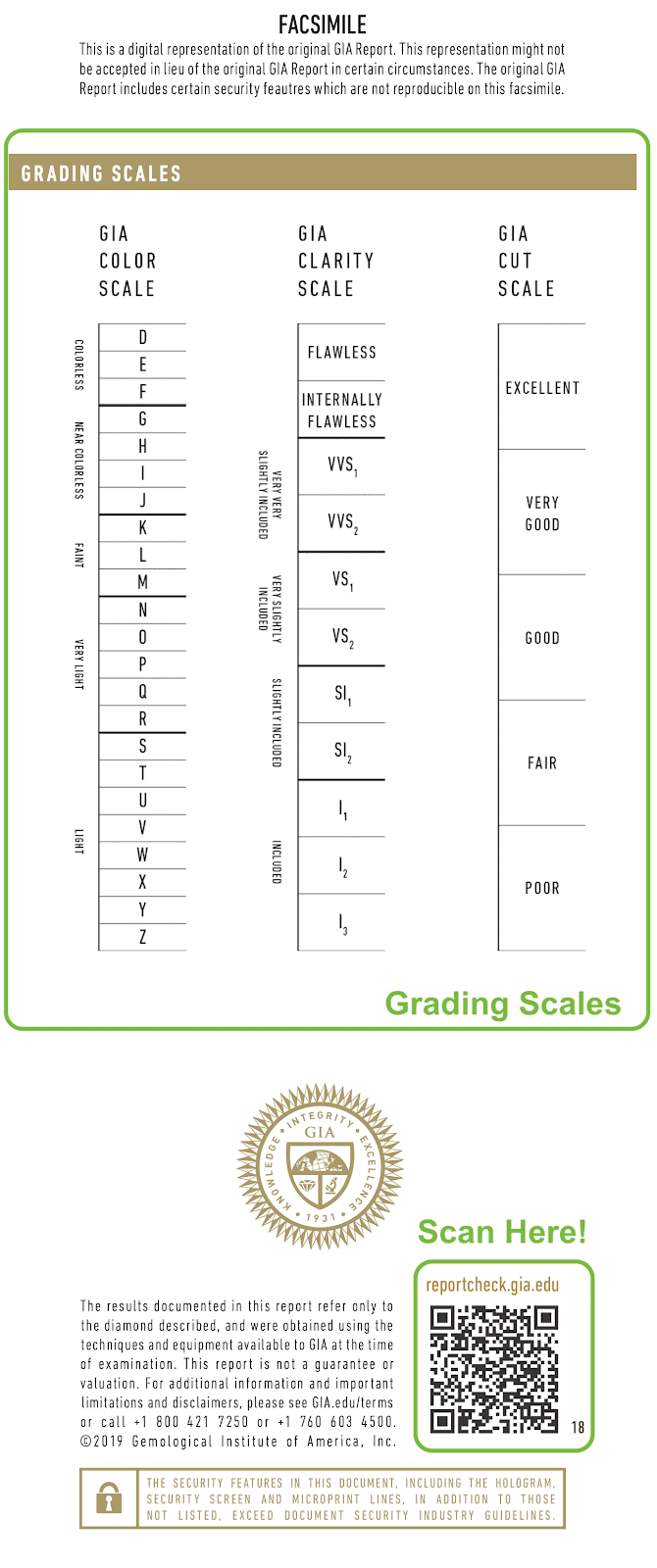
Types of GIA Diamond Reports
To best understand what we are up against: let introduce one idea at a time.
GIA first began separating the reports into Dossier and regular reports. Dossiers are essentially light versions of the full reports. Dossiers are smaller, do not contain a clarity characteristic plot, but have everything else. Dossiers also have a limitation of being only available for diamonds weighing from 0.15ct to 1.99ct.
So, in essence, a Dossier is a down-sized Report with no clarity plot for diamonds under 1.99ct.
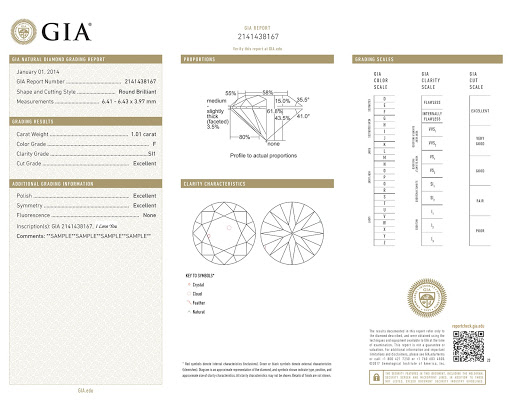
Lab Grown Diamond Reports
Now let's introduce the laboratory-grown diamond reports.
Because of the recent rise of the prevalence and popularity of laboratory-grown, GIA has created two new types of diamond reports specifically for laboratory-grown diamonds: The laboratory-grown Diamond Dossier and the Laboratory-grown Diamond Report. While the layout and the design of the reports are very different, the core contents remain the same. Compared to reports of natural diamonds, all have three panels and contain the category of information. Both dossiers omit the clarity characteristic plot.
Note of the differences here: Laboratory-grown Diamond reports all have a blue color scheme with a big LGDR on the top. The inscription should always include a LABORATORY GROWN and a statement under the comment section stating: "This is a man-made diamond produced by CVD/HTHP growth process and may include post-growth treatments to change color". Lastly, panel 3 with GIA's grading criteria, has been moved to the bottom of the page.
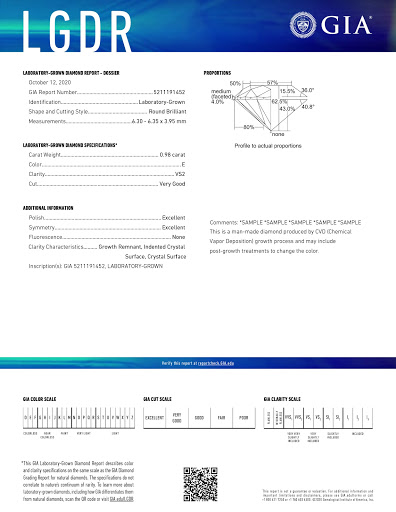
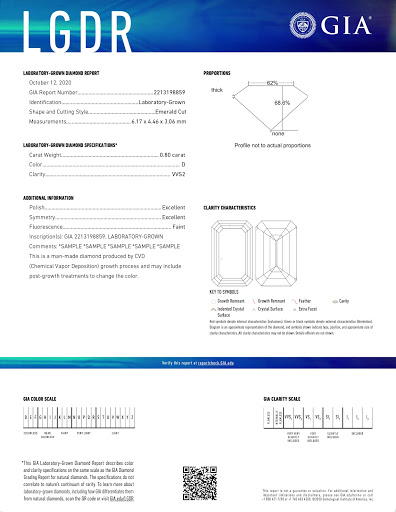
Now that you are fully prepared with all that, go and shop like a pro on Rare Carat


GIA-Graded Diamonds FAQs